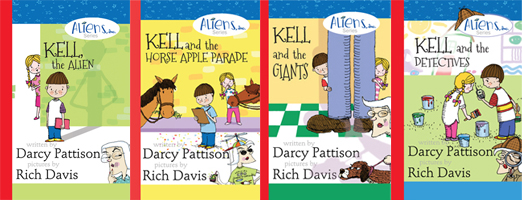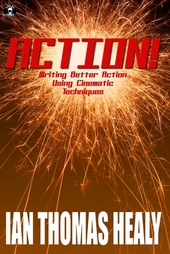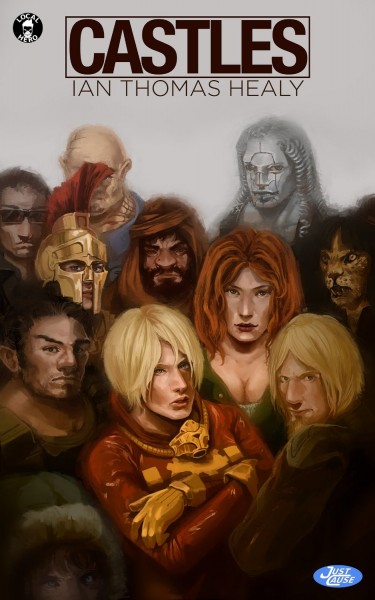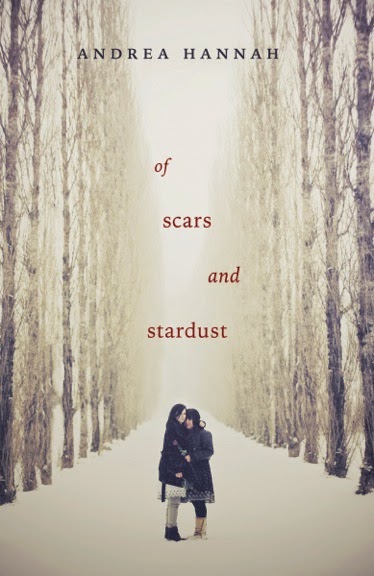Try Book 1 for Free

Darcy’s Note: In my question to understand action scenes better, I came across Ian’s book and was blown away by how practical it is. To make it even more practical I created an Action Scenes Checklist. To understand it and fully exploit it, you should buy his book and read it cover to cover. Yes, I’m that enthusiastic about it. If you plan ANY action in your story, you need this book. Stay tuned below for a chance to win a copy of this book and Healy’s latest novel.
Guest post by Ian Thomas Healy
Like many people, I love movies, and I have a special love for tight action sequences. I have always taken pride in my ability to translate that type of action into my books, and as a writer specializing in superhero fiction, action is an important component of my work. After years of being asked by my writer friends to help them with their own action sequences, it occurred to me that there might be a need for this sort of information across the industry, and so I sat down and analyzed what was it exactly that I did instinctively when I wrote action scenes, and how I might teach that to others. Thus, ACTION! WRITING BETTER ACTION USING CINEMATIC TECHNIQUES (http://www.amazon.com/dp/B0055LH0MU ) was born (naturally, during a running firefight with explosions and hair-breadth escapes).

A lot of writers dance around action, because writing it is daunting and uncomfortable. By its very nature, action is high-energy, full of motion and intense pacing, and for many writers, it’s a weird change from what they’re used to. At its very root, though, action is a means to resolve conflict, and conflict is the basis of all good storytelling, so it’s not something to run from (crashing through a window, sliding down a rooftop slope, and then dropping into a waiting convertible), but to embrace as an important part of your toolbox.
 In ACTION, I break down what makes an action scene tick, from individual acts, called Stunts, up through Engagements (related series of stunts), to the all-encompassing Sequence, which contains more than one Engagement. Here’s an example of an action scene from my new book CASTLES, which released on April 1:
In ACTION, I break down what makes an action scene tick, from individual acts, called Stunts, up through Engagements (related series of stunts), to the all-encompassing Sequence, which contains more than one Engagement. Here’s an example of an action scene from my new book CASTLES, which released on April 1:
Sally rushed into the building. All she knew was in the space of a single breath, her entire squad had been taken out. Who were these guys, and how had they stayed under the radar so long? Parahuman criminals didn’t just appear out of the woodwork at random, especially when they were working as a team. There had to be records on these guys somewhere.
And then Sally ran across someone who could move nearly as fast as she could, and she was fortunate not to have been gutted like a fish by the barbed quills sprouting from the new combatant’s arms. He slashed at her and she twisted and dodged through the lobby of the building on full defense. Unlike the criminals two floors above, the guy attacking Sally wore less of a jumpsuit and more of a wrestling-style singlet. The quills seemed to grow all over his body and she thought of him as Porcupine Man.
Super-speed abilities were rare in the world, even more so than psionic powers, and yet this was the second speedster Sally had fought in as many weeks. “Is there a factory churning you guys out or something?”
Porcupine Man’s perceptions were apparently accelerated like hers, for he understood her despite her rapid speech. “The times, they are a-changin’.” He spread his arms wide and flexed his chest in a peculiar way.
Sally dropped to the floor as several quills whisked over her head to embed themselves in the reception desk, quivering like arrows. A sharp, burning pain shot down her back and she knew one of them had grazed her. She hoped like hell they weren’t tipped with poison. “That’s a Bob Dylan lyric. My husband loves that song.” She pulled her horseshoes from her belt.
“Maybe he can play it at your funeral.” Porcupine Man shot more quills at Sally and she threw herself backwards over the reception desk to put something solid between her and her opponent. With his speed, she only had a moment to decide on her next action, and she froze when she saw a terrified woman huddled beneath the desk, eyes wide, a quill poking out of her bloodstained blouse.
Sally had no time to check to see if the woman was severely hurt. She couldn’t stay hiding where she was and put the civilian in danger. Nor could she risk slowing herself down enough to offer any comfort. She heard the patter of Porcupine Man’s approaching footsteps and forced herself to move. She ran, leaning forward to make herself a smaller target. The slice on her back burned like a paper cut with lemon juice in it. He skidded to a stop and Sally knew she had an advantage over him, being able to stop and start instantly.
She glanced back and saw him fire another quill at her from his chest. It had gone from a veritable barbed forest to a sparse stand in just a few moments. His quills didn’t replace themselves very quickly. Maybe she could get him to use them up. She dove for the floor again, twisting herself around to land on her shoulder. The quill passed right over her face, close enough that she could see the wicked barbs on its tip. As she slid, she hurled one of her horseshoes at him. Normally, throwing away one’s melee weapons was a poor choice, but Sally had spent thousands of hours at the targeting range, learning how to throw things effectively. When accelerated by her super-speed arms, the most innocent objects could become deadly projectiles.
Her horseshoes were hardly innocent.
The iron ring caught Porcupine Man on his sternum, hitting him hard enough to send him flying back into a wall, which cracked with his impact. He fell amid a pile of broken drywall and didn’t move.
This scene represents a single Engagement in a larger Sequence, which is Mustang Sally’s team of superheroes versus a group of super-powered bad guys. There are several Stunts in this Engagement:
- Sally dodges as Porcupine Man attacks her in melee combat.
- Sally dodges again as Porcupine Man shoots spines at her in ranged combat.
- Sally dodges yet again as he keeps shooting at her (she’s having a rough go of it).
- Sally goes on the offensive and throws a horseshoe at Porcupine Man, taking him down.
In ACTION, I coach you on methods for writing these types of scenes on a step-by-step basis. When Darcy contacted me to say how helpful she’d found my book, it made my day, because any time I hear that I’ve helped someone to become a better writer, it makes the whole process worthwhile. If you find it a valuable tool for yourself, please don’t hesitate to post a review online and to let me know how it helped you!
Leave a comment and your name will be in a giveaway for a copy of one of Healy’s ebooks (Kindle, epub or pdf). There’s one copy each of ACTION! and CASTLE.

Welcome to our monthly Ask a Pub Pro feature where a publishing professional answers readers and writers' questions regarding the stories they love or their work in progress. This month, Andrea Hannah, the critically acclaimed author of Of Scars and Stardust joins us to answer questions on insta-love, incorporating unusual elements, and writing high action.
We'd love to have you send in your questions for next month's column. Please send questions to AYAPLit AT gmail.com and put "Ask a Pub Pro Question" in the subject line. If your question is chosen, you'll get to include a link to your social media and a one to two sentence (think Tweet size) blurb of your WIP.
Come on! Get those questions in!
Author Andrea Hannah Answers Questions on "Ask a Pub Pro"
1) I've known a couple of writer friends who have designed unusual elements into their stories, elements they thought helped make the story fresh and unique. But then reviewers would complain that these elements were weird or poorly researched because they didn't understand it. Is it better to avoid any element that's not commonly known so that you don't throw the reader off? Or is this just a problem with some reviewers and not the general reading public? (asked by Sara from TX)
Andrea responds: You can’t write to avoid criticism. Trying to dodge critique will drive you bonkers and cause you to lose an important piece of yourself within your story. Also, where would we be without
Harry Potter’s Polyjuice potion, or the
Hunger Games’ tracker jackers? Fresh, unique elements are both fun and necessary in story-telling, and world-building would be a lot less fun without them.
That being said, everything in your story needs to have a purpose, one that can’t possibly be replaced by another element. Example: We
need that Polyjuice potion in HP, because without it we lose the scene where Harry and Ron sneak into the Slytherin common room, which is critical to the overall narrative. We
need those lethal tracker jackers in HG, because they are the catalyst that allow Katniss to get some leverage by grabbing the bow and arrow, and demonstrates Rue’s loyalty to her.
When you’re developing your unique elements, make sure to clearly establish the function and rules of those elements (Ex: we knew right off the bat that the Polyjuice potion had an expiration time) and that it’s clear within the narrative why those elements were essential to those characters, and that their choice to use or destroy them is in line with their character. And above all else, stay true to who your character is, the world they inhabit, and who you are as a writer.
2) I've heard writers say that in high intensity/high action scenes that you decrease the level of detail. I've also heard the opposite, that you should show more detail as if things are happening in slow motion. What do you think? (asked by Anonymous)
Andrea responds: I think it’s a combination of both. Firstly, if you’re writing from a first person POV, that means you’re writing every scene as if we’re experiencing in real time, with your character. If your character is in the midst of kicking some butt, they probably aren’t stopping to notice the color of the sky or the flecks in their attacker’s eyes. It’s called mimic writing, and it’s where you mimic the actions of the writing through the length of your prose. High action usually means short, clipped sentences. Think of how you’d talk if you were out of breath.
But what
really brings an action scene to life is the specific details you do choose to incorporate, not the amount. Choose your details carefully to convey as much about the scene as you can in a powerful way. The spots of blood dotting his chin. The crumpled patch of grass where his sword fell. Really be there, and observe the details in your scene. Then bring us with you!
3) I've heard a lot of people complaining about the insta-love in a lot of young adult books. Yet readers seems to really want the romance to heat up quickly. How do you incorporate the romance without making it insta-love? (asked by Renee in NC)
Andrea responds: I don’t think insta-love is the problem, especially since we’re writing about and for teens, and sometimes, this is how they fall in love (and adults, too)! I think readers are generally sick of feeling that insta-love is used as a plot device instead of an actual experience the character is going through. Look, people fall in love in all sorts of ways in all sorts of timeframes, and all are plausible. When you’re writing your characters, just make sure you know who they are, if it would make sense for them to have that kind of reaction to another human being, and stay true to that. Your readers will be able to feel the genuineness of your characters, and they’ll appreciate your writing for it.
About the Author:
Andrea Hannah lives in the Midwest, where there are plenty of dark nights and creepy cornfields as fodder for her next thriller. Her critically-acclaimed debut novel,
Of Scars and Stardust, was published by Flux in October 2014. She graduated from Michigan State University with a B.A. in special education. When she’s not teaching or writing, she spends her time chasing her sweet children and ornery pug, running, and dreaming up her next adventure. You can find her on Twitter and Instagram @andeehannah, and at
www.andreahannah.comWebsite |
Twitter |
GoodreadsAbout the Book:
After the attack that leaves her little sister, Ella, close to death in a snowy cornfield, Claire Graham is sent to live with her aunt in Manhattan to cope. But the guilt of letting Ella walk home alone that night still torments Claire, and she senses the violence that preyed on her sister hiding around every corner. Her shrink calls it a phobia. Claire calls it the truth.
When Ella vanishes two years later, Claire has no choice but to return to Amble, Ohio, and face her shattered family. Her one comfort is Ella’s diary, left in a place where only Claire could find it. Drawing on a series of cryptic entries, Claire tries to uncover the truth behind Ella’s attack and disappearance. But she soon realizes that not all lost things are meant to be found.
Amazon |
Indiebound |
Goodreads-- posted by Susan Sipal,
@HP4Writers
Eariler this week, I talked about some of the characteristics of what can make a good action scene.
On Wednesday, I shared an action scene and today I’m going to share another one from a YA novel that I think executes characteristics of an action scene really well.
These paragraphs come from a chapter titled “Pursuit” from Specials by Scott Westerfeld. The title name itself clues the reader that they are getting ready for some action.
The protagonist,Tally, is pursuing a helicopter on a hoverboard to rescue her friend Zane from danger. Tally is a “Special” so she has some seriously kick-a** skills, which had to be nothing but fun to write.
Here’s the first example of the author setting up the action scene (underlined emphasis mine):
The wind hit Tally in a roiling wave, whipping her legs out from under her and sending the hoverboard fluttering away. Her ears popped in the eddies and currents of the helicopter’s vortex, and for a terrifying second she saw the giant blades loom close to her in a great blurred wall of force, their ear-shattering beat pounding through her body.
Right away you can feel the essence of being in the air and the danger of the helicopter. The author uses strong verbs (whip, flutter, pop) that match the scene’s setting and shows it all in movement.
Here’s another paragraph in the same scene that shows the protagonist Tally in action (underlined emphasis mine):
Tally begin to fall…
She stabbed her crashed bracelets’ controls, setting them to exhaust their batteries, to pull her toward the tons of metal above as hard as they could. A sudden, crushing force seized her wrists—the combined magnetics of twenty boards shooting up and taking hold. The bracelets dragged her upward, pinning Tally against the nearest riding surface, her arms almost ripped from their sockets by the sudden jerk.
The author continues to show movement using strong verbs (stab, seize, drag, rip) to portray Tally’s reaction of trying find safety after falling from her hoverboard.
Just like Wednesday’s example, Scott Westerfeld’s books are great to study action scenes. The Pursuit chapter is definitely one to study as a great action scene with the setup and the closing.
So that wraps up my action scene week. I hope that you found it helpful to make your own action scenes better.

On Monday, I talked about some of the characteristics of what can make a good action scene.
Today I’m going to share two paragraphs from a YA novel that I think executes characteristics of an action scene really well.
These two paragraphs are from Chapter 13 of The Hunger Games by Suzanne Collins. This book is currently No.1 on the New York Times Children’s Chapter Books Bestseller list — and a mainstay on that list for a whopping 81 weeks.
For those of you who read the blog, you already know how much I think you can learn from this book craft-wise (just learning how to transition scenes is worth the price of the book).
These two paragraphs show the protagonist, Katniss trying to escape a fire manufactured in the arena by the Gamemakers.
This first paragraph gives an example of how the author puts the reader right in the scene (underlined emphasis mine):
“The heat is horrible, but worse than the heat is the smoke, which threatens to suffocate me at any moment. I pull the top of my shirt up over my nose, grateful to find it soaked in sweat, and it offers a thin veil of protection. And I run, choking, my bag banging against my back, my face cut with branches that materialize from the gray haze without warning, because I know I am supposed to run.”
Right away you can feel the danger of the fire, see how Katniss reacts to protect herself. You see her in action trying to escape the fire. The author uses active verbs to show movement as well as show how Katniss has to make snap decisions to save herself.
Here’s another paragraph in the same scene that shows the protagonist Katniss in action (underlined emphasis mine):
“I hurdle over a burning log. Not high enough. The tail end of my jacket catches on fire and I have to stop to rip it from my body and stamp out the flames. But I don’t dare leave the jacket, scorched and smoldering as it is, I take the risk of shoving it in my sleeping bag, hoping the lack of air will quell what I haven’t extinguished. This is all I have, what I carry on my back, and it’s little enough to survive with.”
The author continues to use strong verbs to show movement and how frantic the situation is to escape the fire. Collins also shows how Katniss makes the decision to keep her jacket — even though it may slow her down from escaping the fire.
So those two paragraphs are just quick examples from this book. You can get the full benefit by reading the entire scene and the author has plenty more that you could study.
If you have a novel that you think has fantastic action scenes, please share.

Why do sheepdogs run in their sleep? When my sheepdog runs in his sleep it can only mean that he is trying to send me some message about writing. But that message is hidden in the mists of my own limited understanding. What could the meaning of his twitching paws be? It comes to me. He’s speaking to one of the great problems of writing action scenes. The desire to speed things up.
When you’re writing an action scene you can write as quickly as you like but what happens on the page should move slowly. Slow down time. It will be hard because your adrenaline gets going as you try to make the scene exciting and as you participate through your characters. But I think time works a little differently in action scenes. These scenes work best when you realize that you heighten the tention in such a scene by altering time. Let the character in danger be in danger longer than is actually possible by making the time non-specific.
SIMPLISTIC EXAMPLE--For example, you have BOY and GIRL in danger. Snidely Whiplash has tied them to a train track and the train is coming. Dudley Do-Right is battling Snidely to free BOY and GIRL. They are in a fight to the death, though Dudley Do-Right does keep asking Snidely Whiplash to say uncle and throw down his weapon because he’s a, you know, Canadian Mountie and quite polite and nice. You describe the fight, different aspects of it, while the train moves ever closer. If this were reality you might only have a few lines of the fight before the train actually runs over BOY and GIRL. But you can, simply by not mentioning time, get away with extending it through description of the fight scene and the things they say to each other. It won’t be noticed if you’re crafty about it and don’t extend it to the ridiculous as is the case in some action movies.
Action scenes, whether a fight on school grounds or a chase scene etc..etc.. can be effective as long as they work to push along story or add to character, too.


 In ACTION, I break down what makes an action scene tick, from individual acts, called Stunts, up through Engagements (related series of stunts), to the all-encompassing Sequence, which contains more than one Engagement. Here’s an example of an action scene from my new book CASTLES, which released on April 1:
In ACTION, I break down what makes an action scene tick, from individual acts, called Stunts, up through Engagements (related series of stunts), to the all-encompassing Sequence, which contains more than one Engagement. Here’s an example of an action scene from my new book CASTLES, which released on April 1:






[...] This post was mentioned on Twitter by Karen Strong. Karen Strong said: Wrapping up action scene week on my blog with a great YA novel excerpt from SPECIALS by @scottwesterfeld http://bit.ly/9Vkg0N [...]
Another one of my favourite books! Thanks for the examples. I’m going to look more closely at the verbs I choose.
Lesson learned - use strong verbs that create a mental image! Thanks.
The Uglies series are great books to study for action scenes. The Midnighters series is also full of great scenes to study as well.
Great examples! I need to reread some of Westerfeld’s books and keep an eye open for things like this. Thanks for the post!
Another great post of examples! I’ve got this series in my classroom, but the kids won’t stop passing it around so that I get a chance to read it! Maybe in the summer